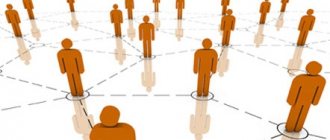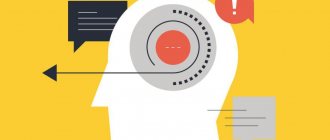What are needs?
Every person has a need to have something. That is, he has a need that requires satisfaction. If he does not get what he wants, he will feel uncomfortable physiologically and psychologically.
If you are hungry, you will not only feel hungry. Thoughts begin to revolve around food, physical and psychological condition worsens, and anger and irritation may appear. But the mood immediately improves after eating. The need is satisfied and life seems much better.
Synonyms for the word “need” are necessity, need, demand. That is, the need represents the demand for objects, functions, people. Unmet needs are internal stimulants of activity. They manifest themselves differently in different situations.
Every person has a certain set of needs. Moreover, the basic needs of all individuals are similar. The difference is only in their strength and quantity.
The number of needs depends on the environment in which a person grew up. If, for example, he was brought up in a family of musicians, then music will be an integral part of his life. If a person grew up in a problematic family, where he was not always well-fed, the most basic needs will be important to him: food, sleep, rest, sex.
When a person feels a need for something, he begins to look for an opportunity to get rid of this need. When he gets what he wants, he experiences satisfaction and pleasure.
Hunger will force you to go to a store or cafe and buy food. But now the need is satisfied, and you already want something completely different, for example, to take a nap. Afterwards, the need will arise to chat with friends, do something creative, etc. There will be no end to the needs. They appear in a newborn baby and end only at the moment of death.
Spiritual needs of the individual
The spiritual needs of the individual are a directed aspiration for self-realization, expressed through creativity or through other activities.
There are 3 aspects of the term spiritual needs of the individual:
- The first aspect includes the desire to master the results of spiritual productivity. This includes exposure to art, culture, and science.
- The second aspect lies in the forms of expression of needs in the material order and social relations in current society.
- The third aspect is the harmonious development of the individual.
Any spiritual needs are represented by a person’s internal motivations for his spiritual manifestation, creativity, creation, creation of spiritual values and their consumption, for spiritual communications (communication). They are determined by the individual’s inner world, the desire to withdraw into oneself, to focus on what is not related to social and physiological needs. These needs encourage people to engage in art, religion, and culture not in order to satisfy their physiological and social needs, but in order to understand the meaning of existence. Their distinguishing feature is their insaturability. Since the more internal needs are satisfied, the more intense and stable they become.
There are no limits to the progressive growth of spiritual needs. The limitation of such growth and development can only be the amount of spiritual wealth previously accumulated by humanity, the strength of the individual’s desires to participate in their work and his capabilities. The main features that distinguish spiritual needs from material ones:
- needs of a spiritual nature arise in the consciousness of the individual;
- needs of a spiritual nature are inherently necessary, and the level of freedom in choosing ways and means to satisfy such needs is much higher than that of material ones;
- satisfaction of most spiritual needs is mainly related to the amount of free time;
- in such needs, the connection between the object of need and the subject is characterized by a certain degree of unselfishness;
- the process of satisfying spiritual needs has no boundaries.
In terms of their content, spiritual needs are objective. They are determined by the totality of the living conditions of individuals and demonstrate the objective need for their spiritual study of the social and natural world that surrounds them.
Yu. Sharov identified a detailed classification of spiritual needs: the need for work; the need for communication; aesthetic and moral needs; scientific and educational needs; need for health improvement; the need of military duty. One of the most important spiritual needs of a person is knowledge. The future of any society depends on the spiritual foundation that will be developed among modern youth.
Types of human needs
Needs can be divided into two types: innate and acquired.
Innate are those with which a person came into this world. The baby cannot do without food, water, air. He needs to feel that his mother is nearby and takes care of him. It is necessary that the room is warm, otherwise it will freeze. Even an adult cannot live without basic needs. He also needs to eat, sleep, and breathe.
Acquired are those that appeared as a result of interaction with the social environment. For example, they will be different if a person grew up in a poor and rich family. Some will be happy if they are given sausage sandwiches for breakfast instead of oatmeal, while others will be offended if they are given a two-room apartment instead of a townhouse. If suddenly the realities of life change, and a person accustomed to luxury is left without the usual big money, then he will experience severe discomfort, even if he has the opportunity to satisfy basic needs.
Real and imaginary
There are also such types of needs as genuine and imaginary. Genuine needs are those needs that a person comes to on his own. If a person has a desire to take up music, this is a genuine need. If he begins to play music after being influenced from outside - relatives, friends, society, such a need becomes imaginary.
All human needs must be reasonable, since not all human needs can be satisfied in a short time, and they should not oppose the moral and moral foundations of society.
Human needs and psychology
If needs exist, then they must be satisfied, and for this purpose purposeful actions must be taken. When a person has a need, he directs his strength to satisfy it. If you want to eat, you buy groceries and prepare some kind of dish. There is a desire to start a family - he is looking for a partner.
But, unfortunately, a person is not always able to satisfy his desires. Moreover, he cannot always understand what exactly he wants. But his peace of mind and happiness depend on this. Therefore, psychology pays a lot of attention to the study of people's needs. Psychologists have noticed several interesting features regarding needs and their satisfaction.
A person is not always aware of his needs. Sometimes people don't understand what they really want. This gives rise to mental suffering, which often turns into psychosomatic illnesses.
Desire and attraction
If a person does not realize what he is drawn to, psychologists use the term “attraction.” That is, he cannot achieve a comfortable state because he is tormented by a need that he does not realize and does not understand. When he begins to understand what he really needs, it is called desire. When desire arises, motivation arises.
Motives, goals, needs
What is motivation? This is a person's movement towards a goal. He has realized what he wants and strives for it; he has a motive. For example, a girl has a goal - losing weight. She begins to take certain actions: goes on a diet, runs in the morning, etc. She has a motive - so that guys pay more attention to her. Then she will begin to feel in demand, that is, she will realize her need.
Needs and emotions
Strong needs lead to strong emotions. If a person experiences strong irritation, it means that some of his needs are not satisfied, and he craves to get something. Therefore, it is important to understand what exactly you want: a good husband, fame, money, there is a desire to buy a big house or go to Paris. In principle, nothing is impossible. The main thing is to understand what you really want. Maybe just to get the attention of a nice neighbor.
Motivation and personality needs
The motivational processes of an individual are aimed at achieving or, conversely, avoiding set goals, implementing certain activities or not. Such processes are accompanied by various emotions, both positive and negative, for example, joy, fear. Also during such processes some psychophysiological tension appears. This means that motivational processes are accompanied by a state of excitement or agitation, and a feeling of decline or surge of strength may also appear.
On the one hand, the regulation of mental processes that affect the direction of activity and the amount of energy needed to perform this very activity is called motivation. On the other hand, motivation is still a certain set of motives that gives direction to activity and the most internal process of motivation. Motivational processes directly explain the choice between different options for action, but which have equally attractive goals. It is motivation that influences the perseverance and perseverance with which an individual achieves his goals and overcomes obstacles.
A logical explanation of the reasons for actions or behavior is called motivation. Motivation may differ from real motives or be deliberately used to disguise them.
Motivation is quite closely related to the needs and requirements of the individual, because it appears when desires (needs) or a lack of something arise. Motivation is the initial stage of an individual’s physical and mental activity. Those. it represents a certain incentive to perform actions by a certain motive or process of choosing reasons for a particular direction of activity.
It should always be taken into account that completely different reasons may lie behind completely similar, at first glance, actions or actions of a subject, i.e. Their motivation may be completely different.
Motivation can be external (extrinsic) or internal (intrinsic). The first is not related to the content of a specific activity, but is determined by external conditions relative to the subject. The second is directly related to the content of the activity process. There is also a distinction between negative and positive motivation. Motivation based on positive messages is called positive. And motivation, the basis of which is negative messages, is called negative. For example, a positive motivation would be “if I behave well, they will buy me ice cream,” a negative motivation would be “if I behave well, they will not punish me.”
Motivation can be individual, i.e. aimed at maintaining the constancy of the internal environment of one’s body. For example, avoidance of pain, thirst, desire to maintain optimal temperature, hunger, etc. It can also be a group one. This includes caring for children, searching and choosing one’s place in the social hierarchy, etc. Cognitive motivational processes include various play activities and research.
Maslow's pyramid of needs
Many scientists and researchers have resorted to classification of needs. But Abraham Maslow achieved the greatest success. He was able to distribute all the needs into seven levels, from the lowest (basic) to the highest.
The advantage of this classification of human needs is as follows. A person must go through the lower levels in order for him to develop needs for the higher ones. If they are not satisfied or partially satisfied, he will never reach level 6 or 7, and he will not have other needs.
What kind of pyramid is this?
- It is based on physiological needs : food, sleep, sex, etc. In order to live normally and feel good, a person must eat, breathe, sleep, etc. normally.
- At the second stage is safety . A person has a need for security and comfort. For example, if a person is driven by hunger, then he may commit a crime - robbery, theft. He doesn’t care about the second stage, that is, security. If basic needs are satisfied, he will think more about his safety and not about food.
- At the third stage are social needs. When basic needs are satisfied, the individual feels safe, begins to build social connections, works with someone, takes care of someone.
- The fourth is the need for recognition and prestige. That is, a person wants to have weight in society, respect from other people, achieve certain results in order to be highly appreciated by people.
- The fifth stage is spiritual needs. If a person has satisfied previous needs, he is able to reveal his creative potential, understand himself and identify.
But there are two more levels that Maslow added later. So now the pyramid looks something like this.
- The first stage is physiological needs.
- The second stage is the need for security.
- The third stage is the need for love, in order to love oneself and be loved.
- The fourth stage is the need for respect and recognition in society.
- The fifth stage is the need for knowledge and obtaining new information.
- The sixth stage is aesthetic needs, the search for harmony and beauty.
- The seventh stage is the need for self-actualization, when it is important for a person to realize his ideas and answer the question: who am I and why do I live?
Achieving the goal in stages
A person sets a goal and strives to achieve it by implementing a life plan.
For this:
- a specific desire is indicated;
- a search is underway for methods and tools to meet the need;
- an item is acquired, mastered, used;
- activity is extinguished.
When a personality develops, the structure of its external and internal aspirations for the acquisition is gradually formed:
- self-preservation, nutrition, rest, sexual satisfaction;
- apartments, clothes, household items;
- communication, position, specialty, education;
- happiness, spiritual beauty, goodness.
Each individual prioritizes necessary items in his own way, which are difficult to change in adulthood.
Other classifications of human needs
It is interesting that throughout human history, philosophers and scientists have put forward different classifications of needs .
So the ancient Greek philosopher Epicurus divides them into three types:
- Needs without which it is impossible to live, calling them natural and obligatory .
- Needs are natural, but optional . For example, if a family of five is huddled in a one-room apartment, it has a need to expand its housing, but in essence it is able to survive in such conditions.
- Needs are unnatural and optional . In this case, whims that are not natural can be considered. For example, “I want to live in the forest, away from everyone,” “I want a horse to become my husband,” etc.
Another interesting classification of needs belongs to psychoanalyst Erich Fromm.
- He put love and friendship , regarding them as the main ones that a person needs.
- In second place is self-affirmation and a sense of self-worth .
- The third is the need to belong to any social group, religion, or culture.
- Fourth place according to Fromm is occupied by creativity and a person’s desire to create something .
- And finally, fifth - knowledge of the world that surrounds a person.
Human interests
Needs are the basis of the interests of each person and his abilities. Interest is a person’s purposeful position regarding the object of his need. People's interests are not really directed to the object of their need, but to the process that makes it available. Interests depend on what social group the individual belongs to and what status he occupies in society.
There is the following classification of human interests: 1. Depending on their carrier - public, group, individual 2. Depending on the orientation - spiritual, social, political.
Each person needs to be aware of their interests, and when realizing them, take into account the interests of other people. Interests should not be of a strategic nature to achieve them. Without understanding whether an interest is genuine or imaginary, a person often achieves his goal by neglecting the interests of other individuals, which contradicts all human norms of humanity.
Material and intangible goods and services
Main factors of production. Benefits, needs, resources. Economic choice. Production capabilities of the economy.
In economic theory, there are four factors of production
:
1) work
– human abilities and skills that can be used in the production of goods and services. To be more precise, here we are talking about labor force as the totality of a person’s physical and spiritual strength, his ability to work. The labor force in each specific country (region) is limited by the number of adult working population. The decline in the birth rate and the associated aging of the population make the problem of efficient use of labor very acute;
2) capital
– production resources created by people – buildings, structures, equipment, tools, vehicles, semi-finished products used in production. Their number in the economy is not unlimited. In addition, they tend to wear out during operation, so they periodically require replacement;
3) Earth
– natural benefits that are used to create goods and services (minerals, forests, water, air, areas of territory);
4) entrepreneurial abilities (entrepreneurship)
- this is a special type of human activity, which consists in the ability to most effectively use other factors of production.
It is necessary to pay attention to the fact that money is not a production factor. Nothing can be made from money, but it is a condition for acquiring resources. Money is raised to purchase factors of production from their owners, and thus provides a real opportunity to combine resources in a single production process.
.
Material and intangible goods and services.
In all developed countries, the economy consists of two interconnected and complementary spheres of production aimed at obtaining benefits:
• material, where a product is created in material form, for example, shoes, machines, cement, coal;
• intangible, where spiritual, moral and other values are created - works of culture, art, science, etc.
Benefits
- means of meeting people's needs.
There are many criteria on the basis of which different types of benefits are distinguished (Fig. 2.2). Benefits can be classified into:
1) material
, including natural gifts of nature (earth, air, water, climate); production products (food, buildings, structures, machines, tools);
2) intangible,
having the form of activity useful to people and influencing the development of human abilities. They are created in the non-productive sphere: healthcare, education, culture, etc. These include internal benefits given to man by nature - abilities in science, voice, ear for music, etc., as well as external benefits - what the outside world gives for satisfaction of needs (reputation, business connections, patronage, etc.).
Human life activity in the process of managing is manifested, on the one hand, in the waste of energy, resources, etc., and on the other, in the corresponding replenishment of living expenses. At the same time, an economic subject (i.e. a person in economic activity) strives to act rationally - by comparing costs and benefits. This behavior is explained as follows.
An essential feature of human life and activity is dependence on the material world. Some material goods are available in abundance and therefore they are always available to people (air, sun rays, wind energy). Such goods in economic theory are called free or non-economic. As long as these conditions remain, these goods and the needs for them are not human concerns and calculations, therefore, they are not studied in economics.
Other material goods are available in limited quantities (various kinds of “rarities”). In order to satisfy the needs for them and to have them in an accessible quantity, human efforts are necessary to obtain them and adapt to the needs.
These benefits are called economic (or economic). The well-being of people depends on the possession of these goods, so they handle them carefully, economically, and prudently.
A specific form of economic good is a commodity, i.e. a good produced for exchange. The very name of the science – “economics” – implies economy or maximization: all participants in economic activity strive, ultimately, to increase their well-being with minimal expenditure of resources. Economics is a specific science that studies the actions of a person when he acts as a producer or consumer, decides the issue of satisfying his needs or the needs of other people.
Needs
- this is the need for something necessary to maintain the vital functions and development of the organism, the human personality, a social group, and society as a whole; internal stimulator of activity.
Human needs are diverse. The American scientist A. Maslow arranged all needs according to the principle of hierarchy in the following ascending order from “lower” - material to “higher” - spiritual:
1) physiological needs (food, drink, warmth, reproduction);
2) the needs of security and self-preservation (protection from external enemies, criminals, diseases);
3) the need for social connections (love, friendship, communication with people, belonging to a group, etc.);
4) needs for respect (recognition of a person as an individual, self-respect, acquisition of a certain status, authority);
5) needs for self-development (improvement of all human abilities and capabilities).
These needs are usually represented in the form of a pyramid, based on the biological needs of people, above which rise the spiritual needs of a person as a social person (Fig. 3.1).
Until a person's lower order needs are satisfied, higher order needs do not operate.
However, this classification can be supplemented with other needs: material and spiritual, rational and irrational, conscious and unconscious, etc.
Economic resources
– sources, means of ensuring production, a set of resources used in economic activity. Resources are divided into: natural, labor, capital, financial, information.
If resources were not limited, each individual and society as a whole would have everything they want: beautiful apartments, any brand of car, fashionable clothes, etc. It is clear that this is impossible in real life. Society is not able to create complete abundance and satisfy all the needs of all people. It can do something else: satisfy all the needs of only individual people. But this means that all other people will be forced to give up a higher level of consumption.
Thus, society is faced with a fundamental economic problem - the contradiction between growing human needs for a variety of goods and limited resources to satisfy these needs. From this universal contradiction the subject of economic science is derived, which, as we have already noted, consists of studying the problem of the effective use of limited resources in order to maximally satisfy the material needs of people.
Economic choice
- a method of distributing limited resources that allows for maximum benefits.
But choice is just an act of will. A material force is also needed that could realize and carry out this choice. This material force is production. Economy is a production that realizes the free choice of each participant. So, the choice of priority for satisfying needs turns the absolute limitation of resources into a relative one, and production into an economy.
Any society must solve, in one way or another, three fundamental interrelated economic problems (three main issues),
- What? Which of the possible goods and services should be produced in a given economic system in a certain period of time?
-How? With what combination of production resources, using what technology, should the goods and services selected from the possible options be produced?
-for whom? Who will buy the selected goods and services, pay for them, and benefit from them?
These three questions are basic and common to all economic systems, but the ways to solve them are different in each economic system.
A market economy in its pure form presupposes the existence of responsible and independent producers and consumers. Manufacturers produce those goods from the sale of which they expect to make a profit. Consequently, even before starting production activities, they must know for whom they are producing the product, what consumer properties it should have, when it needs to be produced and how much. At the same time, manufacturers use those means of production that allow them to save costs as much as possible, since they cover them from their own pockets. It is clear that the level of consumption will depend on the income received. In other words, the manufacturer will produce for whoever pays.
Thus, a market economy is a form of economic organization in which individual producers and consumers interact through the market, answering the questions: what, how, for whom to produce - using a system of prices, profits and losses, supply and demand.
Production capabilities
– these are the possibilities for the production of economic goods with the full and efficient use of all available resources and a given level of development of scientific and technological progress. Limited resources limit production capabilities. Using resources to create one product means not producing another. It forces you to make a choice; what products to produce, what needs to satisfy first.
The essence of the problem of choice under conditions of limited resources can be understood using the production possibilities curve (PPC). Production possibilities curve is a graph showing the entire set of options for using available resources to produce alternative ones (alternative -
allowing one of two or more possibilities) types of products (goods).
Let's look at a textbook example. Suppose that society needs the production of two products - oil and guns. Possible production volumes of two products with full use of limited resources are presented in table. 1.1. By plotting two products on the coordinate axes and connecting the points reflecting different combinations of production volumes of these products, we obtain a production possibilities curve (Fig. 4).
Table 1.1
Alternative options for producing oil and guns
| Option | Oil, million tons | Guns, thousand pieces |
| A | ||
| IN | ||
| WITH | ||
| D | ||
| E |
Rice. 4. Production possibility curve
The points on the production possibilities curve show all possible combinations of producing two products, given full use of available resources and unchanged technology.
Analysis of the above production possibilities curve allows us to formulate a number of important economic provisions.
1. The law of substitution, which states that with full use of resources and unchanged technology, an increase in the production of one product leads to a decrease in another. Moving along the production possibilities curve, indeed, we see that as oil production increases, the production of guns decreases, and vice versa.
2. If the economy is at point N,
this means that the available resources are not fully used: it is possible to increase the production of both guns and oil.
Point N
indicates underproduction and inefficient use of resources.
3. Point M
given
the
resources and available technology for production is unattainable. But this does not mean that production capabilities cannot increase. There are two ways to expand production capabilities:
extensive –
carried out through the involvement of additional resources (increasing the number of employees, involving new reserves of natural raw materials in the processing, increasing capital investments without changing the technical basis of production);
intense –
achieved through better use of available resources (acceleration of scientific and technical progress and, on this basis, increased productivity of labor and equipment, improved organization of production, etc.).
4. Any production is efficient,
if it ensures full use of resources, i.e.
if an increase in the production of one product leads to a decrease in the production of another product. Therefore, any point on
the production possibilities curve is efficient.
Suppose that a company has a certain machine park and a certain number of employees and produces two products. If the machine park is fully used, all workers are busy, then in order to increase the production of one product, you will have to reduce the production of another. If it is possible to increase the production of one product without reducing the production of another, this means that the available resources are underutilized, i.e. production is inefficient.
5. Since an increase in the production of one product leads to a decrease in the production of another, the cost of producing one product can be expressed in the amount of another product, the production of which must be abandoned in connection with the production of the first. Thus, increasing oil production from zero to 2 million tons “cost” 3 thousand guns, the production of which had to be abandoned. We can say that additional
2 million tons of oil cost 3 thousand guns. In economics, such value or such production costs are called alternative or imputed.
The role of man in management organization
In market conditions, human resources play a key role in any organization, ensuring its competitiveness and prospects for strategic development. A modern organization is a single organism created to achieve certain goals. Using an anthropomorphic approach, it is possible to endow the organization as a whole and its structural elements with the features of the human body: the head is the goal of the organization, the torso is the structure, the right hand is the staff, the left hand is technology, the body relies on resources, and its vital activity is ensured by the control system as a nervous system. body system7.
A modern organization, like any living organism, develops, somehow “looks” (the image of the organization), “behaves” (strategy of behavior in the market) and somehow “feels” (the socio-psychological climate of the organization). An organization, as a living organism, consists of “cells” - individual employees, each of whom has their own needs and aspirations.
In an organization, the main thing is work and its results, which are provided by employees. People in an organization act, on the one hand, as objects of labor - bearers of professional skills and abilities, and on the other hand, as subjects of labor - unique individuals.
In the concept of “human relations”, the organization’s personnel are considered from the point of view of realizing the labor potential of employees (in this case, objective characteristics are taken into account - content, specificity and working conditions), and from the point of view of their personal characteristics - needs, motives, values. Accordingly, the internal environment of the organization, on which either a person’s sense of well-being, comfort at work or a feeling of dissatisfaction that can lead to leaving the organization depends, is determined not by one parameter, but by many components. At the same time, for different people, the priority of factors that ensure satisfaction with work and its conditions differs significantly8.
Job satisfaction reflects a person’s attitude towards various aspects or areas of his professional activity, namely: towards work, the employing organization, professional and official career, etc. The following job characteristics are identified, on which the degree of satisfaction with work as a whole depends.
The work itself. People prefer to do jobs that give them the opportunity to make the most of their skills and abilities and that provide freedom of action. The presence of elements of “challenge” in work, such as creativity, the opportunity for an individual to use his original or unique abilities, the complexity of tasks, etc., lead to increased job satisfaction.
Feeling of social importance. It is important for a person to realize that his work is not only a way to earn money, that he is in demand in society, and benefits people.
Respect for the employing organization. For many people, the prestige of their place of work and belonging to a well-known and respected organization in society are very important.
Salary. If employees see that the pay system is fairly related to their individual level of professional skills, then they are more likely to be satisfied. The key to job satisfaction is not the absolute amount of money, but a sense of fairness. Satisfaction with pay depends not only on the connection between the level of pay and results and achievements, but also on how the person himself perceives this.
Non-salary types of income. When choosing an organization, people focus not only on wages, but also on the availability and completeness of the so-called “social package,” that is, additional types of benefits and services that the organization provides to its employees. Such a package may include the purchase of housing or the provision of loans, additional medical insurance, payment for training and advanced training, free food, compensation for transportation expenses when traveling to and from work, subsidies for housing and utilities, the provision of modern communications (mobile phone , Internet), providing vouchers for sanatorium treatment to employees and their children, etc.
Prospects for growth and development. The desire for job growth is natural for a person, but in this case we are talking not only about a career as a prospect to occupy a higher position and earn more. A person in professional activity tends to desire to solve larger-scale problems, have greater powers and bear responsibility, and have unlimited opportunities for self-realization.
Relationships with the immediate supervisor. For many people, a leader personifies the organization, respect or disrespect for their boss, the well-being of relations with him is a significant moral and psychological factor.
Colleagues. For most employees, work fulfills a need for social contact. The presence of friendly relationships in a team leads to increased job satisfaction.
Employee job dissatisfaction can be expressed through various types of organizational behavior: loyalty, neglect, fighting and withdrawal.
Quitting is a behavior associated with the fact that the employee understands the complete discrepancy between his expectations and the resources of the organization and decides to quit. In this case, he is not stopped by the need to look for another job.
Model of interaction between a person and an organization
The systemic behavior of a person in an organization can be presented from two positions:
1. From the perspective of human interaction with the organizational environment. In this case, the person is at the center of the model.
2. From the perspective of an organization that includes individuals. In this case, the organization as a whole is the starting point of consideration.
If the initial consideration of the interaction between a person and the organizational environment is a person, the model of this interaction can be described as follows:
A person, interacting with the organizational environment, receives stimulating influences from it that encourage action.
A person, under the influence of stimulating signals from the organizational environment, carries out certain actions.
Actions carried out by a person lead to the performance of certain jobs and at the same time have a certain impact on the organizational environment.
In this model, the organizational environment includes those elements of the organizational environment that interact with a person. Stimuli cover the full range of possible stimuli, which may include speech and written signals, the actions of other people, light signals, etc. In the model, a person appears as a biological and social being with certain physiological and other kinds of needs, experience, knowledge, skills, morals, values, etc. Reaction to stimulating influences covers the perception of these influences by a person, their assessment and conscious or unconscious decision-making about response actions. Actions and behavior include thinking, body movements, speech, facial expressions, exclamations, gestures, etc. The results of the work consist of two parts. The first is what a person has achieved for himself by responding to incentives, what problems he has solved caused by stimulating influences. The second is what he did for the organizational environment, for the organization in response to the stimulating influences that the organization applied in relation to the person5.
When considering the interaction of a person with the organizational environment from the perspective of the organization as a whole, the system model of this interaction has the following form:
An organization as a single organism that has an input, a transformer and an output, interacting with the external environment in a certain way corresponding to the nature and content of this interaction, includes a person as an element of the organization in the process of organizational and material exchange between the organization and the environment. In this model, a person is considered as an integral part of the input and acts as a resource of the organization, which it, along with other resources, uses in its activities.
The possibility of a person’s inclusion in an organizational environment, called socialization, depends not only on the characteristics of that environment, but equally on the characteristics of the person. Each person has a multifaceted personality structure, and he interacts with the organization not as a mechanism performing specific actions and operations, but as a rational and conscious being with aspirations, desires, emotions, mood, imagination, sharing certain beliefs and following a certain morality .
No matter how much a person and an organization strive to reduce their interaction only to performing certain jobs at a certain workplace, they will never succeed. The interaction of a person with an organization is always broader, since a person cannot be reduced to the state of a machine, and the organizational environment cannot be reduced to a workplace.
In each specific situation of the emergence of difficulties and problems in the interaction of a person with the organizational environment, specific reasons corresponding to the given situation that gave rise to these problems can be found. However, despite the situational nature of these problems, it is possible to point out two fundamental points that underlie most of the reasons that cause misunderstanding, opposition and conflicts in human interaction with the organizational environment. These points are:
- the individual’s expectations and ideas about the organizational environment and his place in it;
- the organization's expectations regarding the individual and his role in it.










